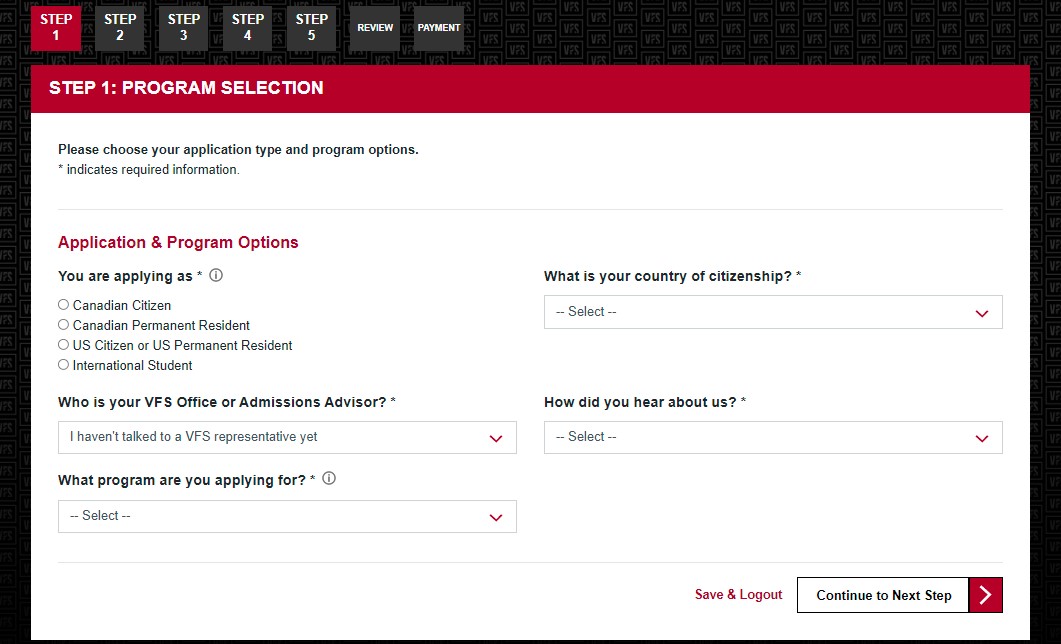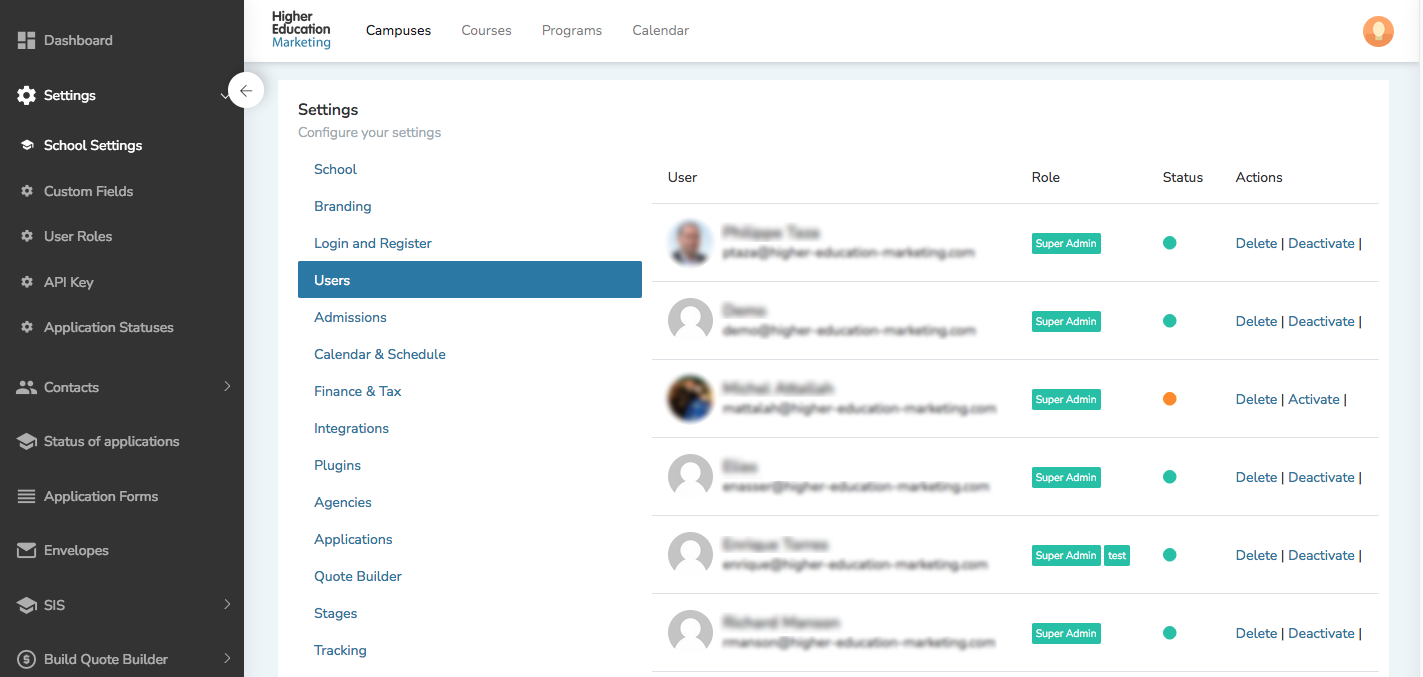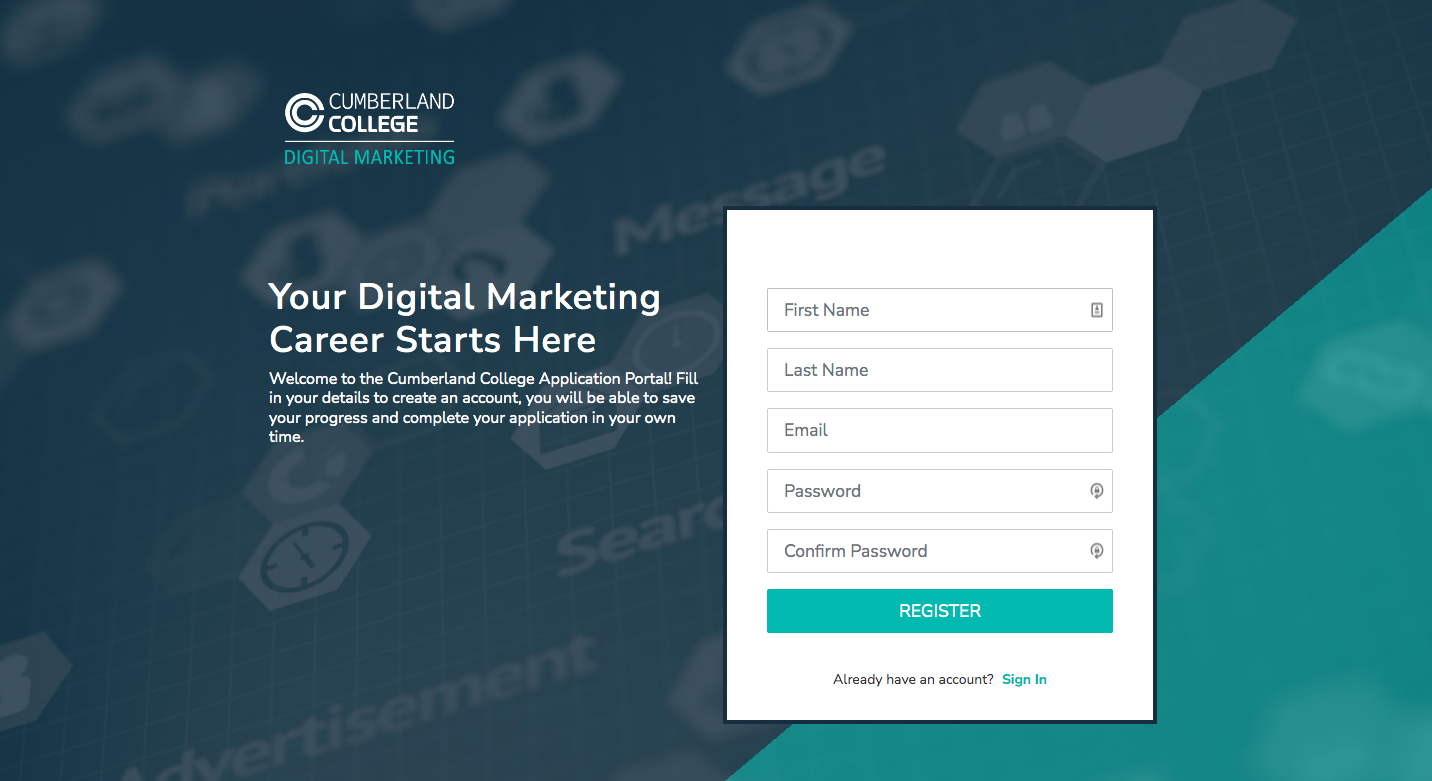A school’s student application portal typically acts as a gateway into the school itself. When done right, schools not only use this portal to guide students throughout the application process but also to develop stronger relationships with them. A good student application portal makes the application process easy, quick, and enjoyable—providing support and engagement along the way.
Portal technology can provide schools with profound value. In fact, education portals were ranked as the most valuable marketing investment among a group of international higher education marketing and recruitment professionals. That’s because these portals serve to make your school more accessible, connecting you with prospective students from around the world at the most critical time: application submissions.
Nowadays, there are countless student information systems that boast robust student portals. Available options provide schools with a range of services that improve admissions management and streamline communication efforts.
But what should you look for when evaluating these software solutions?
Functionality is at the core of a good student portal system, but additional features can transform good software into a great, all-in-one solution. This way, your new portal system can help you boost your enrollment efforts and build trust with your prospects. When analyzing your options, be on the lookout for something that works best for your school and your students. Read on to discover five essential features of a winning student application portal.
1. Seek Out a Student-Centered Self-Service Application Portal
Try to consider your target audience and adopt a system that puts your prospects’ needs first and foremost. This is where a student-centered interface makes all the difference. Your school’s student application portal should intuitively guide your prospects through every step of the admissions process while still giving them the freedom to complete their application at their own pace and convenience.
Having self-service forms with automated features can make the application process much more pleasant for your prospects. For instance, an auto-save feature can be used to save your prospect’s information and allow them to continue their application at a later time. Similarly, auto-fill can improve your school’s application process—potentially encouraging multiple enrolments since data is automatically stored and generated for easy and quick registration.
Example: The Vancouver Film School gives prospects the option to save their information and continue their application at a more convenient time. While on the portal, prospects can also view their progress and anticipate how many steps are needed to complete their application—making the process more intuitive and student-friendly.

Source: Vancouver Film School
It’s important to consider that prospective students may be browsing your website on their phones, even going through the application process on mobile or tablet devices. For this reason, you’ll want to ensure that your student application portal is mobile responsive—changing to adapt to your user’s screen while also maintaining all of the same functionalities, including uploading documents and providing signatures.
The same application form on Vancouver Film School’s website adapts to a mobile screen and allows users to input information in the same way as on the desktop:

Source: Vancouver Film School
By allowing applicants to track their progress, prospects can easily determine where they stand. Catering to prospective students’ needs through a robust and student-centred application portal can help you decrease drop-off rates since your system will proactively ensure that their needs and concerns have been properly addressed every step of the way. The main takeaway here is to make sure your chosen portal system adequately supports your prospects and guides them to where they want to be.
It should be noted that the ability to track and monitor applications should also extend to your school, providing you with a valuable overview that spans a wide timeframe. Through HEM-SP, HEM’s proprietary Student Portal, schools can track applications on the dashboard and view data across different periods of time.

Source: ESO Paris
Schools can also monitor specific types of applications in order to better understand how far prospects have come, as illustrated in this example from HEM-SP:

Source: Study 2020
2. Nurture Meaningful Ties with Your Prospects through Engaging Student Portal Features
To build a strong connection with your prospects, you’ll want to emphasize student success from day one. This means your student application portal should have features that engage your prospects—promoting transparency and trust. One key way to do this is by choosing a portal system that includes clear and easy-to-access support functions, such as live chat or call features, which allow prospects to receive real-time answers to their questions or concerns.
Choose a system that features engaging built-in support, allowing your school to communicate effectively and provide your prospects with helpful resources—including any relevant information about their application, such as important dates, scheduled events, and even financial transactions. A robust student portal can integrate different payment gateways (such as Stripe or Flywire) that make it much easier for prospects to pay tuition, accommodations, and other program costs. This can be particularly valuable for international students using different currencies to complete payments.
Example: HEM-SP provides different integrations that include various payment options in order to help prospects complete their application at their own convenience.

Source: Study 2020
By providing such built-in support, you can ensure that prospects’ transition to your school will be seamless and enjoyable. You can also ensure that student needs are being met, allowing your school to identify those who can benefit from additional support.
The example below is taken from the Rhode Island School of Design application portal, which offers prospects the option to connect with advisors via live chat in the sidebar through Common App. This space also includes brief answers to general questions that can provide prospects with valuable insights:

Source: Common App
Student portals with features that link to communication platforms or marketing automation systems can play a key in engaging your prospects. Through them, your prospects can receive important reminders or messages, notifying them of any relevant changes or giving them the option to reach out to your school’s admissions team for extra help. By reaching out, even through automated messages, your school can slowly build a meaningful relationship with prospects that shows them you care.
Example: After starting an application on London Business School’s portal system, users receive a welcoming email with a link to a program brochure within minutes of applying. It should be noted that the email is generated from a personal account, giving a real name instead of an automated one—making the connection feel more real and authentic.

Source: London Business School
Scrolling further down, prospects are given the option to contact a program advisor or set up an appointment online.

In some way, the student portal can give prospects insight into the general student experience at your school. For instance, establishing an open line of communication in this early stage can make your prospects feel that your school actively caters to its students. Automated emails that connect prospects to school resources or program links based on their interests (like the one above) can serve as a simple way to nurture this meaningful relationship. It also ensures that prospects receive the right information at the right time—when they’re actively researching the program. This strategic approach to communication can help you close the deal and transform an interested prospect into a proud alum.
Pro Tip: Schools that want to take this feature a step further can send emails that connect interested prospects with volunteer students or alumni, further bolstering their connection with your school. As a result, your prospects can gain unique insights that help guide them throughout the application process while deepening their loyalty and trust along the way.
3. Eliminate Silos and Promote a Unified Experience on Your School’s Student Portal
Applying for your school’s program should be a painless process. To ensure that is the case, you’ll want your prospects to have access to the functionalities and services they need on a single platform. For example, if your school needs certain documents or signatures to accept an application, you can use your student portal to allow prospects to complete these requirements all in one place.
Additional student portal features can include easy access to admissions, academics, finance information, personal account, and other support teams. A unified portal provides students with a more enriching experience, designed to streamline every aspect of the student experience and application process all at the same time. The result is an all-in-one solution, one that makes different sections easy to find, explore, and engage with—promoting a more user-friendly interface.
Example: Concordia University’s student portal gives applicants an easy platform to interact with, where users can quickly find different aspects of the student experience throughout the application process. These sections can be clicked on to reveal further actions and useful services.

Source: Concordia University
Giving prospects a single-access point to various services through clearly outlined sections on the student portal makes navigating to those services an easy and simple task. It also prevents prospects from having to go through multiple, and unnecessary, log-in procedures to access the information they need.
Here, you’ll also want a system that can centralize your school’s management, making the software a hub for all key enrollment processes. HEM-SP can provide your team with an integrated digital management system that allows you to invite new users and assign new roles by creating unique accounts. These accounts can be used to help you control who can view and edit different aspects of the application, making it particularly useful for agencies that manage different schools (each with separate programs) as well as schools that manage multiple campuses with different program offerings.
Example: Schools using HEM-SP can navigate to “School Settings” in order to invite new users and assign new roles as shown below:

Ultimately, it’s important to ensure that your portal is intuitively designed—giving both you and your users access to all the right tools for maximum ease of mind. This includes promoting unified functions where everything works exactly as it should without overlapping with other existing features (like duplicate calendars or input fields). In this way, each feature is given a distinct yet integrated purpose.
4. Provide Your School with a Compatible and Customizable Student Portal System
It’s equally important to look for a student application portal that works as well for your school as it does for your students. Here, you’ll want to select a portal system that can integrate seamlessly with existing software used by your school, such as marketing automation software, communication platforms, and payment gateway integrations. Doing so ensures that the information you gather is accurate and actionable.
For example, a student portal that connects with your school’s Customer Relationship Management (CRM) software is incredibly important—allowing you to take your marketing and communication efforts to the next level. Connecting your student portal with your school’s CRM software gives you a single platform to track and follow up with your leads and prospects.
HEM-SP software is specifically designed to function as part of a larger digital management system, making it easy for your school to integrate the software with your school’s existing systems. This includes payment gateways, communication platforms, marketing automation systems, and, of course, your CRM software.
The example below showcases how schools can use HEM-SP to integrate other platforms (like Mautic, HEM’s proprietary CRM, and HubSpot among others. Schools can also use this space to customize actions that further enhance the application process:

Opting for a customizable student portal can make all the difference with your marketing and management efforts. Having the ability to build your application based on your school’s specific needs and services can make the application process more unique and personalized for your prospects. For instance, they can select their campus or method of learning and even book accommodations as part of their overall application.
Using HEM-SP, schools can customize every aspect of their application forms—choosing specific design elements, smart functions, and validation rules as required:

By tailoring the application process to your school’s needs and collecting different data in one place, your admissions team can quickly and efficiently organize and act on the information provided by your prospects. Through the HEM Student Portal, you can choose specific sections as well as the fields within each section to create fully customized applications. The example below showcases HEM-SP’s Application Builder, a feature within our Student Portal:

Source: Study 2020
It’s important to note that your chosen student application portal should be able to embrace your personal branding, helping you maintain a consistent image across all of your interactions with students. The following examples showcase how different schools use HEM-SP—allowing the schools to customize the design of their log-in pages to reflect their own preferences and individual brand:

Source: IFOA

Source: Cumberland College
5. Ensure Future Success by Adopting a Scalable Student Application Portal
Technology is constantly evolving, making it essential for users to stay up-to-date. The world of education is no different. New trends and technologies can significantly impact education and the student experience. To ensure that your school is constantly providing students with the best experience possible, you’ll want to adopt a student portal system that is flexible and scalable enough to embrace the ambiguity of the future.
Essentially, you’ll want a portal system that provides your school with ample maintenance and support no matter the circumstances.
Education adapts to student needs and so should systems that support them. Including innovative ideas for admissions in your application process as new trends, technologies, and needs arise can make your school an industry leader. Incorporating these ideas into your student application portal and being proactive in catering to your prospects can help foster trust—encouraging them to complete their enrolment.
To help you narrow down your search, consider some of the following questions:
– What are your school’s current and future needs?
– Who will manage the updates or patches of your system, and how often?
– How flexible or customizable will your new application portal be?
It’s also worth noting that being able to maintain and regularly optimize your student application portal is incredibly important. Try to be on the lookout for additional features that can continue to improve your portal system. Ultimately, choosing an option that allows you to regularly maintain, grow, and improve your portal can help your school continuously enhance the user experience throughout the student life-cycle.







